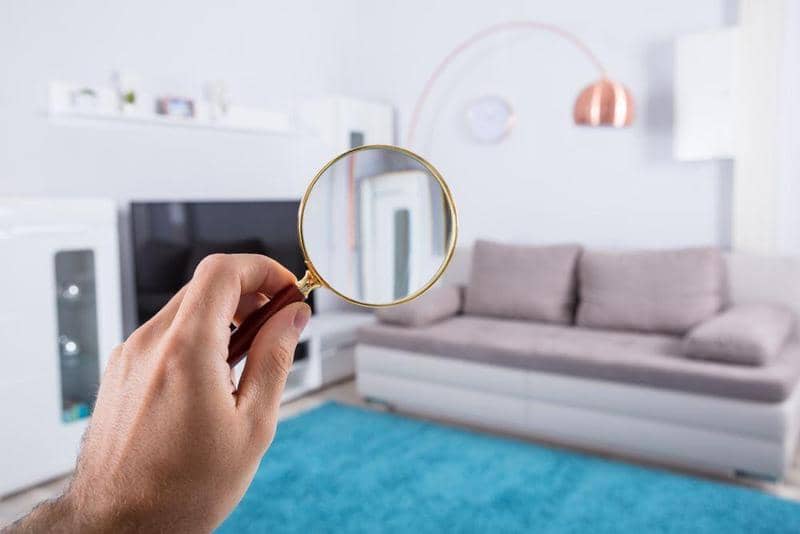What is an Inventory?
An inventory, otherwise known as a ‘schedule of condition’, is exactly what it says on the tin – it is a report of the condition of the property at the start of a tenancy. It also includes details of all exterior areas, fixtures, fittings and furnishings. A good inventory will include a written description, along with clear photos or a video showing everything mentioned in the report.
What’s the point of an inventory?
An Inventory’s primary function is to act as evidence to the state of a property at the start of a tenancy. Legally all security deposits you have paid to your landlord or letting agent must be registered with a government-backed tenancy deposit scheme, meaning at the end of your tenancy, the inventory is the evidence used to determine if any of your deposit is withheld.
Who does the Inventory?
It is the landlord, or their letting agent’s responsibility to organise the inventory. Most will usually use a professional inventory company, but some may choose to do it themselves. If you do not think an inventory is up to the correct standard it may be worth taking some additional descriptions and photos and giving them to your landlord to go along with the inventory. Additionally, if you notice anything that is different to the inventory, then make a note of it, take a photo, and again send it onto your landlord to add to the existing inventory.
What should an inventory look like?
The report should be long, boring, and list all the property’s contents, décor, fixtures, fittings, furnishings, for both the interior and any exterior areas, along with utility meter readings. Most professional inventories will go through each room and list all features in the same order, making it easier (if not more tedious!), to go through. You should also be provided with photos, a video or ideally both to back-up the description.
When should an inventory take place?
The inventory will be done before you move into a property, and there is no ned to you to be there when it is conducted, as you will have the chance to add to or challenge the report later. In an ideal world you will go through the inventory’s contents with your landlord/letting agent at the point of check-in and note any amendments while you are both present, however we know that this is not always realistic. If unable to go through the inventory together, you should be given adequate time to be able to go fully through the inventory and add any notes. After a week or so if you have not responded with any adjustments then it will be assumed that the inventory is a fair representation of the property.
What if I do not get an inventory?
If no inventory is provided, this means there is no evidence to show the state of the property when you moved in. This means that a landlord will have a hard time deducting any of your deposit when it comes to the end of the tenancy, but the same is true for you too. No inventory means you won’t be able to demonstrate what damage already existed. If no inventory is provided you should ask your landlord to arrange one and let them know the possible consequences with regards to the deposit. If they still don’t provide you with one, you should record your own with dated photos, and tell your landlord this is what you’ve done.
What about Fair wear and tear?
Although you should aim to return the property in the same condition as that stated on the inventory, we know that this isn’t realistic after living in a property for a length of time. Although there is no precise definition of fair wear and tear, in general if you use the property and its contents in a responsible, and tenant-like manner then no damage will be done. You shouldn’t be responsible for any natural deterioration of the property through the course of your tenancy.
When should I look at my inventory?
In most scenarios after checking-in you will not look, or even think about your inventory again until it is time to leave. Before you do leave, do another walk-through with the inventory – this gives you the chance to see any differences you think are your responsibility, and fix them, and it also gives you an indication of the level of cleanliness you need to aim for. Once you leave a check-out report will be be generated listing any changes to the property with photographic evidence, and justification for any deposit deductions your landlord is proposing. If you and your landlord cannot agree on the proposed deductions these will be forwarded to the adjudication team of the tenancy deposit scheme who your deposit is held with. It is at this point that the adjudicators will ask both parties to provide any evidence for their claim. An adjudicators decision is final and binding on all parties, so it is important to provide satisfactory evidence.
3 Top Tips
- Although it’s boring, when you move in go through the inventory in its entirety and check all is present and correct.
- During your tenancy if any items are damaged or deteriorate, it is best to let your landlord or letting agent know as soon as possible.
- If you are renting a furnished property, when it comes to checking-out use the inventory to put the correct items in the room they were originally provided in, this makes it a lot easier for the person doing the check-out and avoids any deposit deductions for missing items.








